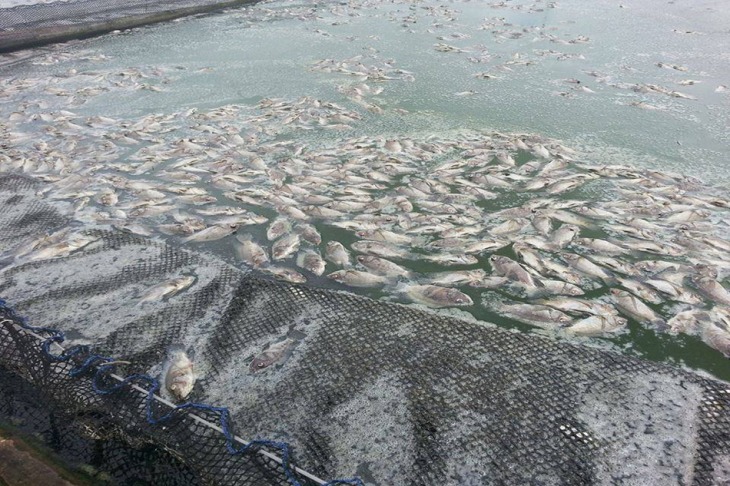
Photo: Francis Canlas
Philippines: PHP126-M Tilapia destroyed in Lake Sebu fish kill; state of calamity declared
By Allen Estabillo, 2017;Officials of Lake Sebu town in South Cotabato have placed the entire area under the state of calamity due to a recent massive fish kill that destroyed around P126 million worth of Tilapia (Oreochromis niloticus).
Roberto Bagong, action officer of the Lake Sebu Municipal Disaster Risk Reduction and Management Office, said Thursday the municipal council issued the calamity declaration in a session on Wednesday.
He said the move was based on a recommendation from their office and the MDRRM Council headed by Mayor Antonio Fungan.
But he said the council has set conditions that they need to accomplish in line with the declaration, among them the immediate submission of some documentary requirements.
Three barangays – Poblacion, Takonel and Bacdulong – were earlier placed under the state of calamity due to the impact of the fish kill from January 27 to February 4.
The fish kill, which is considered the worst in Lake Sebu so far, destroyed around 1.4 million tonnes of Tilapia from 4,944 fish cages owned by 464 operators.
Bagong said that based on their latest assessment, the estimated damage value has reached over P126 million. The average farm-gate price for Tilapia in Lake Sebu is at P90 per kilo.
As next move following the calamity declaration, the official said they will convene the town’s fish cage operators and other stakeholders on Monday next week for a dialogue and consultation.
He said they will introduce to local fishing stakeholders various recommendations made by the Bureau of Fisheries and Aquatic Resources (BFAR) and the provincial government of South Cotabato to help address the recurrent fish kills at the lake.
These include the enforcement of the 10 percent limit of the lake’s area for aquaculture development as set in Republic Act 8850 or the Philippine Fishery Code of 1998.
Around 20 percent of the 354-hectare lake are presently occupied by fish cages or way higher than its carrying capacity.
“They also recommended the setting of a regular closed season for fishing and a moratorium of two to five years for fish cage operations,” he said.
On the part of the municipal government, he said they will push for the immediate cleanup of Water Hyacinths (Eichhornia crassipes) or Water Lilies (Nymphaea sp.) in parts of the 354-hectare lake.
Bagong said they will also forge memorandum of agreements with fish cage operators for the conduct of regular cleanup in areas that they occupy.
He said they will tap the participation of the barangays in the cleanup activities to ensure that they would be sustained.
Experts noted that the overcrowding of fish cages at the lake, the proliferation of Water Hyacinths and the use of commercial feeds by operators have caused its waters to deteriorate, triggering fish kills.
They trigger the occurrence of “kamahong,” a phenomenon that is mainly caused by the sudden rise in the water’s temperature.
“Kamahong,” which usually occurs during the rainy season, triggers the rise of sulfuric acid in the lake’s waters that eventually cause the massive fish kill.
BFAR earlier said results of its water sampling on the lake and other physio-chemical parameters showed that Lake Sebu’s waters are “dying.”
Last year, the municipal government of Lake Sebu recorded at least eight fish kill incidents that destroyed around P1.4 million worth of Tilapia. The last major fish kill in the area was in 2014.
Source: Philippine News Agency


